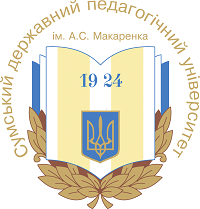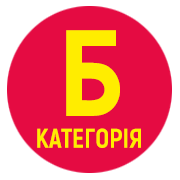INDIVIDUALIZATION OF PHYSICAL EDUCATION IN HIGHER EDUCATION INSTITUTIONS: MOTIVATION DIAGNOSTICS
DOI:
https://doi.org/10.32782/olimpspu/2025.2.16Keywords:
physical education, individualization, motivation of higher education students, survey, psycho-emotional health, higher education institutions, youth healthAbstract
This article explores current challenges and opportunities related to the individualization of physical education in higher education institutions (HEIs) in Ukraine. Based on an empirical study conducted among first- and second-year students of the State University of Trade and Economics, Penitentiary Academy of Ukraine and the National Technical University of Ukraine «Igor Sikorsky Kyiv Polytechnic Institute», motivational factors, barriers, benefits, and students' attitudes toward physical activity were analyzed. The findings highlight the strategic importance of investing in physical education as a means of supporting youth psychophysiological well-being. Purpose of the study. To determine the level of student motivation for physical activity, identify barriers and key incentives for exercise, and justify directions for implementing an individualized approach to physical education in HEIs in the context of promoting students’ psychophysiological health. Methodology. A survey of students (n=62) was conducted to assess motivational attitudes, frequency of participation, choice of activities, and barriers to regular physical activity. The survey results were analyzed to identify key trends. Research objectives. To investigate the level of motivation for physical activity among students and to identify the main barriers and incentives for engaging in physical exercise among HEI students.Materials and methods of the study. Study participants: 62 first- and second-year students from the State University of Trade and Economics, Penitentiary Academy of Ukraine and the National Technical University of Ukraine «Igor Sikorsky Kyiv Polytechnic Institute». Data collection method. Online survey using a structured questionnaire that included closed and semi-open questions on: motivation level, frequency of physical activity, perceived barriers, benefits, and attitudes toward physical activity. Data analysis methods. Quantitative analysis of survey results (percentage distribution, mean values); comparative analysis of intrinsic and extrinsic motivation; interpretation of findings in the context of the need for individualized physical education.Scientific novelty. The study revealed the dominance of extrinsic motivation over intrinsic motivation, indicating potential for developing more effective physical education programs. Conclusions. Most HEI students regularly engage in physical activity, although their motivation is often driven by extrinsic factors (appearance, weight loss). The main barriers include lack of time and low intrinsic motivation. Physical education is mostly perceived as a formal obligation, reducing its effectiveness. The popularity of fitness and gym activities indicates a growing demand for personalized forms of physical activity. The physical education system in HEIs requires modernization in terms of staff, curricula, technical resources, and digitalization.
References
Безкоровайна Л. В. До поняття про компетенцію майбутніх фахівців фізичного виховання і спорту. Педагогіка, психологія та медико-біологічні проблеми фізичного виховання і спорту. 2006. № 8. С. 7–10.
Булатова М. М., Усачов Ю. А. Сучасні фізкультурно-оздоровчі технології у фізичному вихованні. Теорія і методика фізичного виховання. 2008. С. 320–354.
Вихляєв Ю. М., Паришкура Ю. В., Томіч Л. М. Потреби і мотивації до рухової діяльності як психофізіологічні чинники фітнесу та рекреації. Науковий часопис Національного педагогічного університету імені М. П. Драгоманова. Серія 15. Науково-педагогічні проблеми фізичної культури (фізична культура і спорт). 2022. Вип. 5 (150). С. 21-24.
Воловик Н. І. Основи оздоровчого фітнесу: Навчальний посібник. Видавництво НПУ імені М. П. Драгоманова, 2010. 240 с.
Круцевич Т.Ю. Теорія і методика фізичного виховання. Загальні основи теорії і методики фізичного виховання. Київ: Олімпійська література. Том 1. 2012. 392 с.
Мірошніченко В. М., Паришкура (Козерук) Ю. В., Брезденюк О. Ю., Редько С. Ю. Модель ефективності фізкультурно-оздоровчих занять фітнесом із жінками першого періоду зрілого віку. Науковий часопис НПУ імені М.П. Драгоманова. 2023. 8(168)23. С. 98–102. DOI 10.31392/NPU-nc.series15.2023.8(168).19
Стратегія розвитку спорту і фізичної активності України до 2032 року Міністерства культури, молоді та спорту України https://drive.google.com/
Усачов Ю. До питання про ідентифікацію системного статусу засобів оздоровчого фітнесу. Теорія і методика фіз. виховання і спорту. 2005. № 2-3. С. 68-70.
Mykola Yevtuch, Vasyl Fedorets, Oksana Klochko, Tetiana Branitska, Yuliia Kozeruk. Actualization of metacognitive abilities and archetypal measurement of consciousness in the context of improving the health-preserving competence of physical education teacher. Journal of Physical Education and Sport. Vol 21 (Suppl. issue 5), Art 410 pp 3084-3093, October, 2021. DOI:10.7752/jpes.2021. s 5410 https://efsupit.ro/images/stories/octombrie2021/Art%20410.pd
Downloads
Published
Issue
Section
License

This work is licensed under a Creative Commons Attribution-NonCommercial 4.0 International License.







